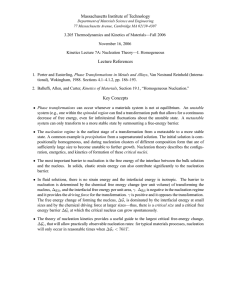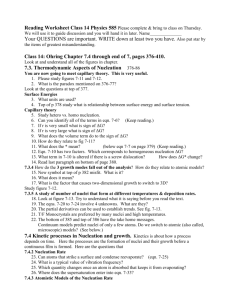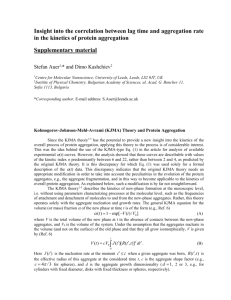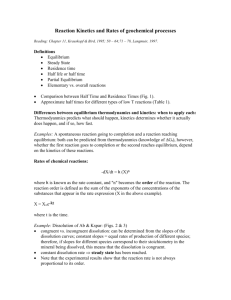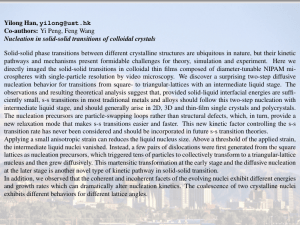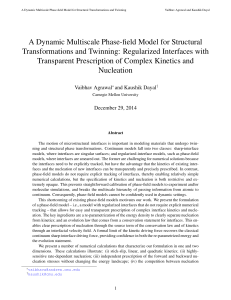Massachusetts Institute of Technology
advertisement
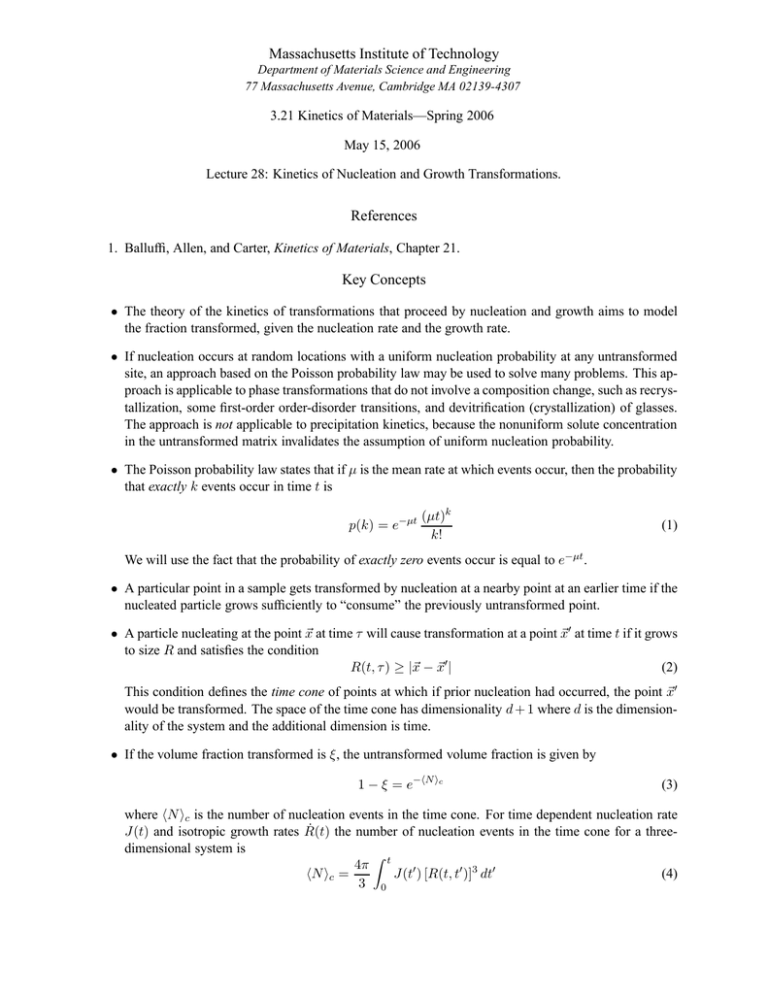
Massachusetts Institute of Technology Department of Materials Science and Engineering 77 Massachusetts Avenue, Cambridge MA 02139-4307 3.21 Kinetics of Materials—Spring 2006 May 15, 2006 Lecture 28: Kinetics of Nucleation and Growth Transformations. References 1. Balluffi, Allen, and Carter, Kinetics of Materials, Chapter 21. Key Concepts • The theory of the kinetics of transformations that proceed by nucleation and growth aims to model the fraction transformed, given the nucleation rate and the growth rate. • If nucleation occurs at random locations with a uniform nucleation probability at any untransformed site, an approach based on the Poisson probability law may be used to solve many problems. This ap­ proach is applicable to phase transformations that do not involve a composition change, such as recrys­ tallization, some first-order order-disorder transitions, and devitrification (crystallization) of glasses. The approach is not applicable to precipitation kinetics, because the nonuniform solute concentration in the untransformed matrix invalidates the assumption of uniform nucleation probability. • The Poisson probability law states that if µ is the mean rate at which events occur, then the probability that exactly k events occur in time t is p(k) = e−µt (µt)k k! (1) We will use the fact that the probability of exactly zero events occur is equal to e−µt . • A particular point in a sample gets transformed by nucleation at a nearby point at an earlier time if the nucleated particle grows sufficiently to “consume” the previously untransformed point. • A particle nucleating at the point �x at time τ will cause transformation at a point �x′ at time t if it grows to size R and satisfies the condition R(t, τ ) ≥ |�x − �x′ | (2) This condition defines the time cone of points at which if prior nucleation had occurred, the point �x′ would be transformed. The space of the time cone has dimensionality d + 1 where d is the dimension­ ality of the system and the additional dimension is time. • If the volume fraction transformed is ξ, the untransformed volume fraction is given by 1 − ξ = e−hN ic (3) where �N �c is the number of nucleation events in the time cone. For time dependent nucleation rate J(t) and isotropic growth rates Ṙ(t) the number of nucleation events in the time cone for a threedimensional system is � 4π t J(t′ ) [R(t, t′ )]3 dt′ (4) �N �c = 3 0 • For constant J and Ṙ, �N �c = JBt/(d + 1), where B is the appropriate “area” of the base of the time cone for the dimensionality d (see KoM Eq. 21.10). • For constant nucleation and growth rates Jand Ṙ, in three dimensions the untransformed fraction is given by 3 4 (5) 1 − ξ = e −(π/3)J Ṙ t A plot of 1 − ξ vs. t has a sigmoidal shape (see KoM Fig. 21.2). • The time-cone method is well-suited to studying transformation kinetics in systems with finite ge­ ometries. KoM Section 21.1.2 treats the transformation kinetics near the edge of a thin semi-infinite plate. Near the edge of the plate, the time cone is truncated, leading to slower transformation kinetics. Related Exercises in Kinetics of Materials Review Exercises 21.1–2, pp. 540–542.


